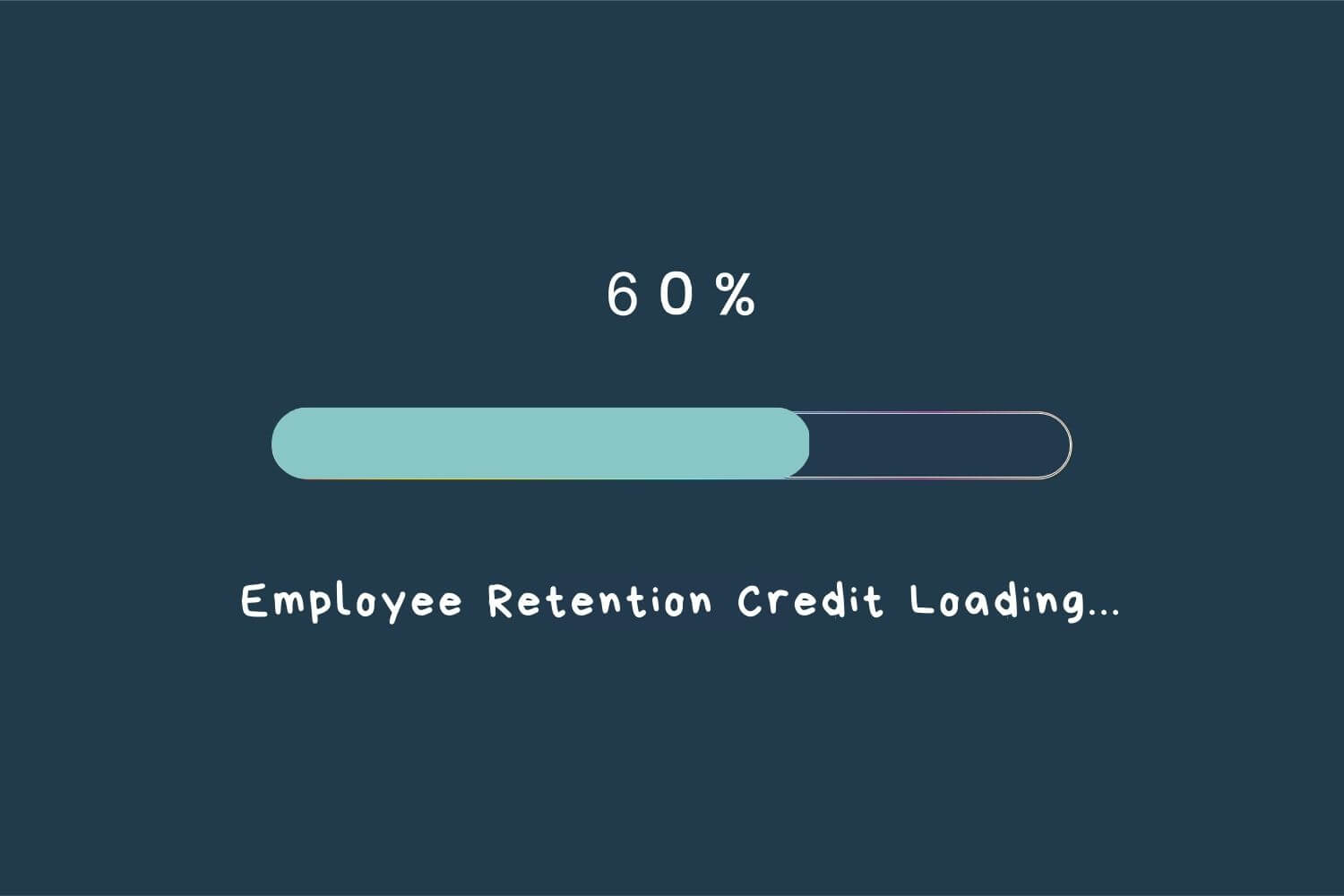After filing your employee retention credit, you’ll want that money to arrive as fast as possible. While you wait, you’ll undoubtedly be left wondering when that refund check will come. This article explains how to check the status of your employee retention credit and offers tips to avoid any delays along the way.
Use Bottomline Concepts for streamlined and speedy ERC filing!
Make Sure You Qualify
Even if you’ve already submitted your employee retention credit request to the IRS, you may not receive anything back at all. The government has very specific guidelines depicting which businesses are eligible for money back.
To qualify for a refund, your business must have experienced one of the following:
- Your business was completely or partially closed from a government order in your state. This order must have come as a result of the COVID-19 pandemic
- Your business faced a certain decline in gross receipts
The government’s definition of “a decline in gross receipts” changed between 2020 and 2021.
For the 2020 calendar, a company must have at least a 50% decrease in gross receipts for each quarter compared to the same period in 2019. The refund could only apply to companies with 100 full-time employees or less, excluding owners.
In 2021, businesses only needed a 20% drop in gross receipts per quarter compared to 2019’s numbers. The government also allowed businesses with up to 500 full-time employees to participate.
If neither of the above bullet points applied to your organization during 2020 and 2021, the IRS won’t be cutting you a check. ERC filing services such as Bottomline Concepts and ERC Assistant have free questionnaires you can use to see if you qualify for a refund.
>>> Related Post: What is the Deadline for the Employee Retention Credit?
How To Check the Status of Your Employee Retention Credit
Businesses often find themselves in radio silence after submitting employee retention credit forms to the IRS. There are ways to check on the status of your claim if you don’t want to just wait around.
1. Check With Your ERC Filing Service
Using an ERC filing service can often expedite the submission process of your claim. Since these companies understand the process, they can calculate your exact refund amount faster and know which paperwork to deal with.
This intimate knowledge typically gets your documentation in front of the IRS faster than if you had filed it yourself, leading to a quicker refund. It also greatly reduces the likelihood of errors in your filing that could delay results down the road.
Many ERC filing services keep detailed records of each submission and may have an idea of when to expect your reimbursement. You can reach out to the company you used and see what information they have for you.
2. Call the IRS Directly
You can also check the status of your refund by calling the IRS directly. It’s possible to call 877-777-4778 to speak with a live agent.
You’ll need to provide proof of your identity while on the call. This could include your legal name, social security number, business name, employer identification number, or more.
While on the line, you can ask questions about your claim and see how much longer you’ll have to wait. The IRS receives countless calls each day, so getting through to someone may take a considerable amount of time.
Luckily, there’s an easier way to check on your refund through the IRS’s online portal.
3. Use the IRS Refund Status Tool
The fastest way to receive an update on your reimbursement is right on the IRS website. Through the IRS’s refund status tool, you can see the status of your claim and when a check should be coming your way.
To see your refund status, you’ll need to choose the tax year you’re inquiring about. You must pick either 2020 or 2021 as part of your search. If you qualify for reimbursement for both years, you will have to perform another check for the other calendar year.
The tool is updated every day with the latest news on your application. It can also alert you to issues that may throw a cog into the timeline.
This way, you can address these issues before the IRS contacts you and get the process back on track. Otherwise, you’re just wasting valuable time while your claim remains stagnant.
When Should You Expect Your Employee Retention Credit?
At last count, the IRS still has more than 300,000 unprocessed forms from businesses that requested employee retention credit. Each form is an amendment of payroll paperwork processed during the COVID-19 pandemic, leading to lots of cross-checking of information.
When the ERC process first began, businesses were receiving refunds in about a month’s time. With so many requests now in the queue, you may find yourself waiting between six months and a year for your money to arrive.
The IRS chose to follow stringent restrictions during the height of the COVID-19 pandemic, facing shutdowns and staff limitations. Many employees had to work remotely, leading to much of the delay we’re facing today.
It also didn’t help to have so many businesses submit claims in the same time frame. Each request must pass through a stringent process to ensure companies receive the correct amounts owed to them. Any mistakes in applications only slow the process more.
Is There a Way to Speed Up the Process?
In the past, the IRS offered Form 7200 for businesses to apply for advanced payment or their ERC credit. As of January 2022, this form is no longer available for use.
Unfortunately, there’s nothing you can do to expedite your refund. Once you click that submit button, all you can do is sit back and wait until the IRS processes your claim.
If you have yet to submit your claim, do your do-diligence in making sure all the information listed on your Form 941-X is correct. Submitting accurate information the first time around will help things considerably.
You can check the status of your claim periodically to see if your application has hit a snag somewhere along the way. Being proactive about fixing an issue can get your submission back on track with minimal time lost.
Issues That Could Delay Your Employee Retention Credit
The IRS application backlog aside, there are a few factors that could delay your employee retention credit. Here are a few issues that slow the process down.
Miscalculating Your ERC Refund Totals
When walking through Form 941-X to amend your 2020 and 2021 payroll taxes, getting every number exactly right is vital. A mismatch with a decimal place or failing to carry a one will lead to incorrect totals.
You’re allowed up to $5,000 per employee for 2020 and $21,000 per employee for 2021. The IRS caps qualifying wages at $10,000 for the purpose of employee retention credit no matter how much each staff member actually makes.
It’s possible to skip most of the lines on your Form 941-X when filing an amendment, but the form still isn’t very clear. Use our employee retention credit guide to make sure you didn’t miss a step.
If there are errors, you’ll have to wait for the IRS to find these errors before you’ll get the chance to fix them.
Missing Information on Form 941-X
In addition to numbers, Form 941-X requires information about you and your business. Failing to provide all the necessary data will surely lead to delays.
As you move through the document, you’ll need to check the correct boxes to inform the IRS of the purpose of your request. If there’s any confusion about your submission, the IRS could reject your refund.
Note that you’ll need a Form 941-X for each quarter you’re correcting for the two years employee retention credit was available. This could mean a total of four forms if you’re requesting funds for 2020 and the first three quarters of 2021.
Large ERC Refunds
It should come as no surprise that larger-than-usual ERC refunds are going to slow down the system. Keep in mind that you can only request a refund for 2020 if your company has less than 100 full-time employees. You can have up to 500 people on your team for 2021 requests.
Getting Money in the Meantime
Some businesses may not be able to survive the long wait times currently plaguing the ERC refund process. If this is you, consider one of the following options to keep your company afloat.
ERC Bridge Loans
A handful of ERC filing services like Omega Accounting Solutions and Lendio offer bridge loans as part of their package. While these companies handle all the nuances of your claim, you can also receive immediate funds to bridge the gap between filing and payment.
In most cases, you can have extra funds deposited into your bank account within a few business days of your request. This is typically quite a bit faster than a traditional loan to get you up and running faster.
Interest rates and other payback requirements vary from provider to provider. You’ll need to work directly with the company to determine your monthly payments and loan length.
Traditional Loans
Your business bank account may be willing to toss a loan your way if you’ve built enough of a rapport with them. The amount you’re eligible for and contract terms hinge primarily on your financial dealings and how well you’ve been able to uphold your credit score.
Many banks have caps on the amounts they’re willing to give, while others can limit loans to specific business purposes. You’ll want carefully look through your options before making a decision.
Be sure to consider how much it will cost you to pay back your loan over time. The last thing you want is to find yourself in an even worse spot in the future because you took out too much or agreed to impossible terms.
It’s Not Too Late to File Your Claim
If your business meets the criteria for employee retention credit, it’s not too late to submit a claim. It’s possible to amend your original payroll tax forms (Form 941) from 2020 or 2021 using Form 941-X for up to three years.
You can submit an employee retention credit request for 2020 up until April 15, 2024. To receive a refund for any of the first three quarters of 2021, you have until April 15, 2025 to send in your documentation.
How To Check the Status of Your Employee Retention Credit Frequently Asked Questions (FAQs)
Still have questions about employee retention credit? This FAQ may have the answers you’re looking for.
Bottom Line on How To Check the Status of Your Employee Retention Credit
The employee retention credit process isn’t an easy one. Businesses can find themselves waiting upwards of one year before receiving any payments, potentially stretching existing funds to the limit. Filing issues can further complicate the system, leading to even longer delays. Using an ERC filing service is the best way to maximize your chances of getting your credit the fastest.
Check out Bottomline Concepts today for fast and efficient ERC filing!
 Sections of this topic
Sections of this topic
















